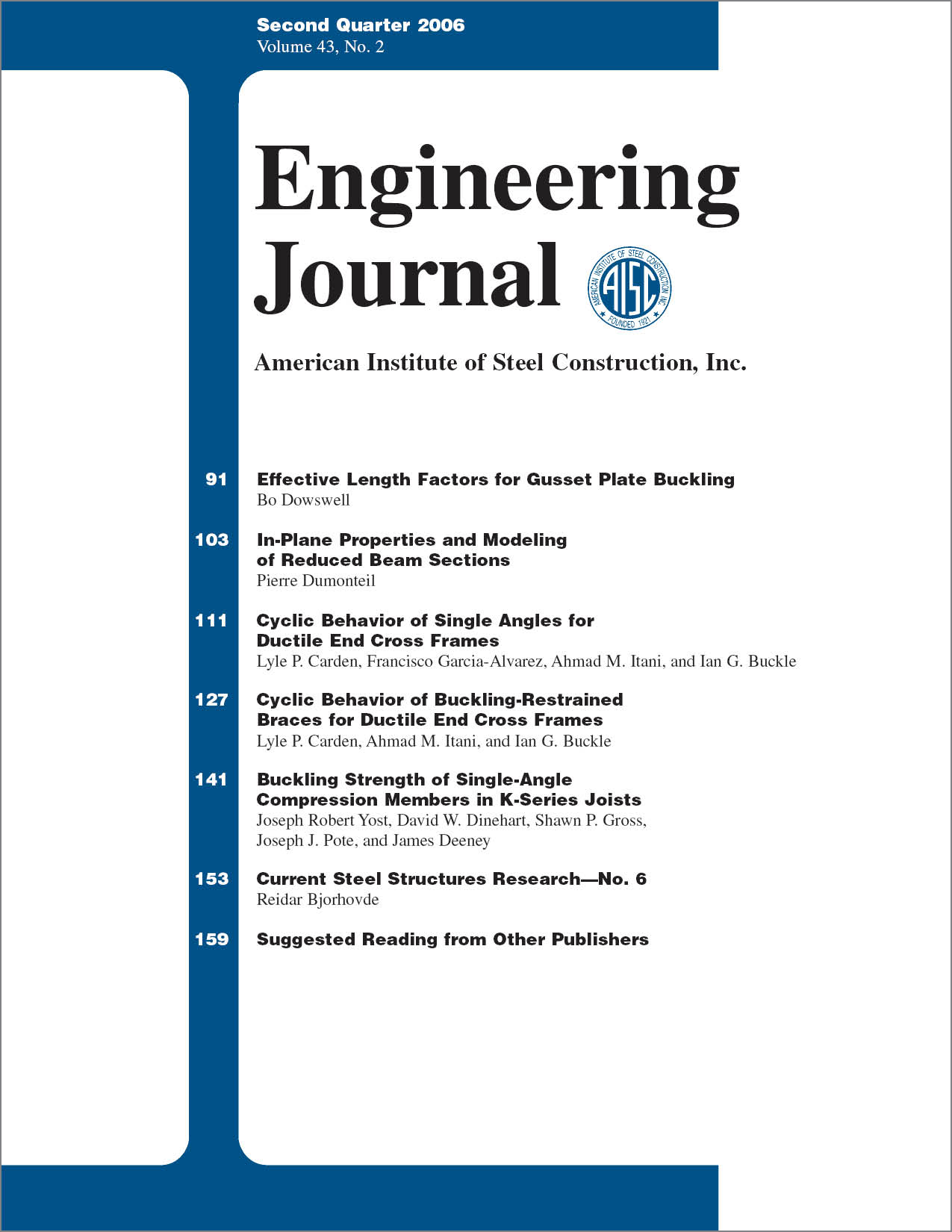Cyclic Behavior of Buckling Restrained Braces for Ductile End Cross Frames
DOI:
https://doi.org/10.62913/engj.v43i2.874Keywords:
Stability and Bracing, Seismic Design, Bridges,Abstract
Ductile end cross frames (ductile end diaphragms) in bridge superstructures have been studied in the past as a potential mechanism for reducing transverse seismic shear in steel plate girder bridges. In this paper, the cyclic inelastic behavior of buckling restrained braces is studied for potential use in these end cross frames. It is shown that the buckling restrained braces exhibit excellent hysteretic behavior with similar properties in tension and compression. The tension yield force of the braces was measured to within 12% of predicted. The maximum force due to strain and cyclic hardening, at a strain of 2%, was typically 35% greater than the expected yield force, and increased by a further 15% or more, during dynamic loading. The maximum compression force was typically 10 to 15% greater than the tension force. When subjected to different loading histories it was found that large amplitude cycles at the beginning of the loading history followed by smaller cycles, and also dynamic loading, reduced the cumulative plastic strain capacity in the braces compared to reverse static loading with increasing amplitude. The area of the hysteresis loops from the braces is typically around 80% of the circumscribing rectangular area and increased as strains increased, unlike the degradation seen in the performance of other types of concentric braces after buckling, indicating efficient energy dissipation. The response of the braces can be approximately modeled with a bi-linear representation to capture the maximum forces, displacements and energy dissipation in the braces. It is recommended that a maximum brace strain of 2.0% be used for design of these buckling restrained braces to be used in ductile end cross frames. At this design strain the calculated cumulative displacement demand following a maximum considered earthquake is less than the displacement capacity of the braces.

